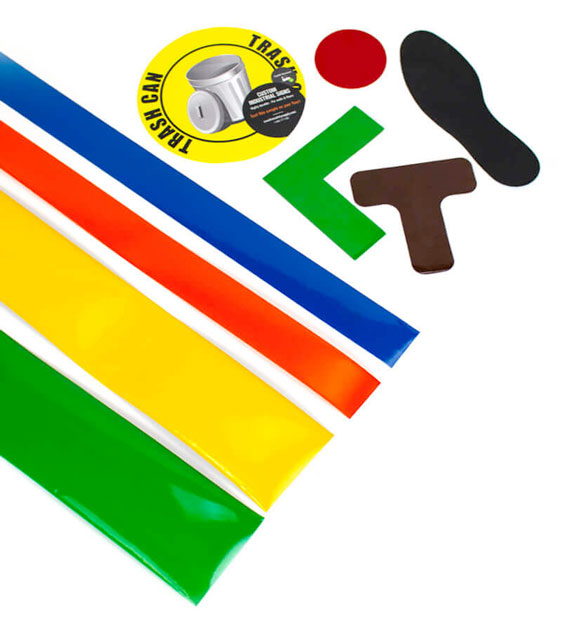
Floor marking color standards can be used for a variety of different things in the workplace. Sometimes they are chosen to help remain in compliance with regulations from OSHA or other agencies, and other times to help with safety, organization, or other efforts within the organization. Regardless of the specific purpose of floor marking color standards, they must be implemented correctly in order to be effective.
Setting Color Meanings
The first step in establishing floor marking color standards within a facility is to determine what each color will mean. This needs to be agreed upon throughout the entire facility to avoid confusion. If a company has multiple buildings, they should all follow the same standards so people transferring or visiting won’t be confused.
Floor Marking Color Standards for 5S
One of the most commonly used set of standards for floor markings comes from the 5S methodology. While not mandatory, 5S offers a variety of recommended color standards that are used in facilities around the world. Any company looking to implement color standards for their floor markings would be wise to start with the following colors:
- Yellow – Yellow markings are the standard for normal aisle ways as well as traffic lanes within a facility. They can also be used to designate work cells.
- White – White markings will designate where different equipment will be placed. This can include carts, trash cans, and other items.
- Blue/Green/Black – Any materials or components that are used in the production process. This can also include work-in-progress items and even finished goods.
- Orange – Items that need to be held for inspection will be placed in areas designated with orange floor markings.
- Red – Products that have defects and need to be reworked, or those that will be used as scrap.
- Red & White – The red and white floor markings are used to identify areas that need to be kept clear for any type of safety or compliance reason. This could include areas around firefighting equipment, eyewash stations, and others.
- Black & White – Areas that need to be kept clear for standard work to be done.
- Black & Yellow – The black and yellow floor markings are for areas that could expose employees to health hazards or physical risks.
Individual facilities can come up with other floor marking standards based on their needs. To the extent possible, however, the number of colors used for floor markings should be kept to as few as possible so that their meanings can be easily remembered. Many facilities will also put up posters that serve as keys to remind them of what each color means.
Similar Questions
- What does markings on a shop floor indicate?
- What are OSHA’s floor marking guidelines?
- What are floor marking standards?
- What are OSHA aisle marking requirements?
- Why is floor marking important?
- What are different types of floor marking?
- Why should I use floor marking?
- What are some lesser-known floor marking uses?
- How does floor marking improve safety?

